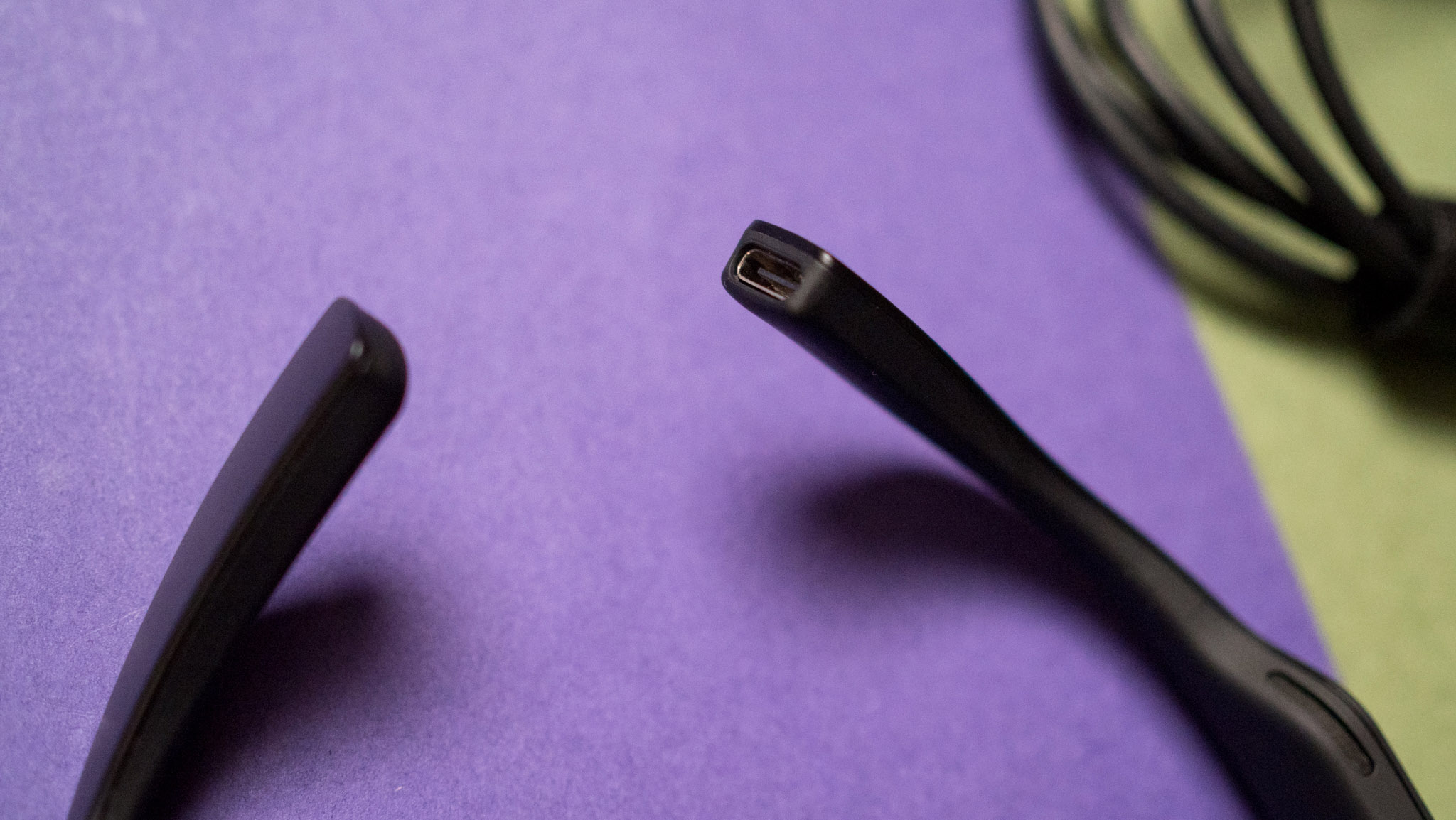Android Central Verdict
The Air 2S has much-needed upgrades over the standard model; edge blurring isn't as noticeable, you get a much better fit and a higher degree of adjustability, and at 79g, the smart glasses are comfortable to wear. RayNeo also added controls to the device to change brightness, volume, and other basics, and the biggest change is the sound: the quad speakers produce a rich sound that's highly engaging. You also get one of the best Micro-OLED panels around, and the Air 2S is a great choice if you want to extend the screen of your gaming handheld or want a larger canvas to stream movies on the go.
Pros
- +
Outstanding 120Hz Micro-OLED display
- +
Detailed sound
- +
Comfortable to wear
- +
Connects to just about any USB-C device
- +
Physical controls on-device
Cons
- -
No IPD adjustment
- -
Still a little fuzzy around the edges
- -
Not built for productivity
Why you can trust Android Central
There's a decent set of choices if you want to buy XR glasses these days, and while Xreal gets a bulk of the attention in this category, TCL-backed RayNeo has carved out a niche on the back of strong releases. I started using the Air 2 last year, and what became immediately clear was the sheer quality of the Micro-OLED panel; with a 201-inch projection, 600-nit brightness, and 120Hz refresh, TCL ticked all the right boxes.
But there were issues with blurriness around the edges, and the limited adjustability meant I couldn't quite get a secure fit. Thankfully, RayNeo is addressing those issues with the Air 2S; the smart glasses share the same Micro-OLED panel as the standard model, but there's much less edge fuzzing this time, you get better adjustability, and the sound quality is markedly different.
Smart glasses are particularly great for gaming and streaming content, and the Air 2S excels at these scenarios. I used the Air 2S for just over a month, and here's why I think these smart glasses are a great choice.
RayNeo Air 2S: Launch and availability

RayNeo unveiled the Air 2S on August 15, and the smart glasses are now available on Amazon for $399. They can also be bought via RayNeo's website, and the brand is bundling the MiraScreen Portable Adapter with all orders until September 15. If you're looking to get the Air 2S to stream content, there's a bundle that includes the outstanding Pocket TV — think of it as a battery-powered Chromecast — that will set you back to the tune of $539.
With the Air 2S now on sale, RayNeo is discounting the original Air 2, and the smart glasses can be bought for $299. There are plenty of differences between the two models, but if you want to maximize value, the Air 2 is still a decent choice.
RayNeo Air 2S: What I like

RayNeo made a lot of minor tweaks to the design of the Air 2S, and the result is that the smart glasses fit comfortably — and are lighter. There's a good amount of adjustability as well, and you can tilt the hinges on the sides to suit your preferences. The nose pads are also adjustable, and this ensures you get a secure fit.
Like most other smart glasses, RayNeo used a visor design at the front, and there's a silver tint that does a good job blocking out external light while still providing some visibility. There's nothing discreet about the design, and while the plastic chassis ensures the smart glasses are light, they are very prominent — particularly because of the visor.
Coming in at just 79g, the Air 2S is comfortable to wear for an extended duration, and there isn't any fatigue in this regard. I also like that RayNeo added controls to the smart glasses, so you can change color vibrancy, adjust the refresh rate, change brightness and volume from the device.

The key differentiator of the Air 2S is the display; it has dual Sony 0.55-inch Micro-OLED panels with 1080p resolution and 120Hz refresh, and they're fantastic. You get lush colors with excellent vibrancy, and it's the brightness where the Air 2S really shines; it goes up to 600 nits, and even in outdoor use, I had to turn down the brightness levels.

The best part of the Air 2S is that you don't need any custom software; just connect the glasses to any USB-C device, and you can start streaming content. This is particularly great if you've got a gaming handheld and want to extend the screen size without connecting it to a TV. I used the Air 2S extensively with my Steam Deck, and it is an ideal pairing.

I didn't see any issues connecting the smart glasses to a host of Android devices, but I will note that the phone needs DisplayPort out; otherwise, you'll need to use an adapter. It wasn't an issue on recent Xiaomi and Vivo devices, and even the Pixel 9 Pro XL didn't pose any issues in this area. Similarly, the iPhone 15 series connected without any trouble.

The 120Hz refresh makes a difference when gaming, and playing Hades on the Steam Deck when connected to the Air 2S was thoroughly enjoyable. Another upgrade over the Air 2 that is immediately noticeable is the audio quality; the Air 2S has quad speakers this time, and they get loud.

The sound quality is astonishingly detailed when you consider the diminutive size of the drivers, and you even get decent bass. The bright Micro-OLED panel combined with the clear sound makes the Air 2S a terrific option in this category. On that note, RayNeo's Pocket TV accessory is a must-have if you're looking to get these smart glasses for entertainment.
The accessory connects via USB-C, and it is essentially a portable Chromecast device with Google TV. It is just as easy to use as any Google TV device, and you get onboard controls that make it relatively easy to navigate to the content you want to stream. There are issues with signing into services like Netflix, but once you've set up the device, it's a great way to stream content without having to plug in your phone.
The Pocket TV has a built-in battery that lasts just over three hours between charges, and that's more than adequate if you want to stream a movie on the go.
RayNeo Air 2S: What I don't like

While the Air 2S has considerable advantages over the standard model, it still misses out on a few features. There's no IPD adjustment available — which is standard on most VR headsets — and the smart glasses aren't ideal if you use prescription glasses. You can get custom inserts to use with the Air 2S, but that service isn't available in all regions.
Another annoyance is that because of the sheer size of the panel, the bottom portion tends to cut out when you're moving your head around. This is particularly annoying during gaming, and I had to reorient the glasses intermittently. There's still some blurriness around the edges, and that is noticeable when watching videos. It isn't anywhere as visible as the Air 2, but there's just enough that it becomes evident.
And as good as these smart glasses are for entertainment, they aren't suited for productivity tasks. RayNeo's Mirror Studio allows you to set up a 3D environment and select floating windows, but it is buggy at times, and has rendering issues.
RayNeo Air 2S: The competition

Xreal is the obvious alternative to RayNeo, and the brand's Air 2 smart glasses use a similar Sony Micro-OLED tech and come in a design that's closer to regular wayfarers. The brightness isn't quite as high as what you get on the Air 2S, but they're a smidgen lighter, and have decent onboard sound.
RayNeo Air 2S: Should you buy it?

You should buy this if:
- You want XR glasses for gaming and streaming content
- You need a bright Micro-OLED panel
- You want a lightweight design that's comfortable
You shouldn't buy this if:
- You need prescription lenses
- You need smart glasses for productivity
- You need a robust software ecosystem
Overall, RayNeo made a lot of necessary tweaks to the Air 2S, and the result is that the smart glasses are much better than the Air 2. While both smart glasses share the same Micro-OLED panel, there's less edge blurriness on the Air 2S, the sound quality is much better, and they're more comfortable to wear.
I don't think they do enough for productivity, and the best use case for these smart glasses is watching videos or playing games. An overwhelming majority of my usage has revolved around connecting the Air 2S to the Steam Deck to boost the size of Valve's handheld, and the smart glasses are terrific in this regard.
Similarly, video content is a delight on the Air 2S, and the quad speakers make a big difference. There's no HDR, but that isn't really a big omission, and the fact that you can project content onto a massive screen on the go is a novelty that doesn't wear off.
There are a few annoyances with RayNeo's software, but again, if you're just looking to get these glasses to stream videos, that's not going to be an issue. On the whole, the Air 2S is a great choice in this category, and the quality of the screen combined with the decent sound makes it worthy of a recommendation.

With a vibrant Micro-OLED panel and detailed sound, the Air 2S is a great choice if you need XR glasses to play games or stream movies on the go.

Harish Jonnalagadda is Android Central's Senior Editor overseeing mobile coverage. In his current role, he leads the site's coverage of Chinese phone brands, networking products, and AV gear. He has been testing phones for over a decade, and has extensive experience in mobile hardware and the global semiconductor industry. Contact him on Twitter at @chunkynerd.
You must confirm your public display name before commenting
Please logout and then login again, you will then be prompted to enter your display name.


